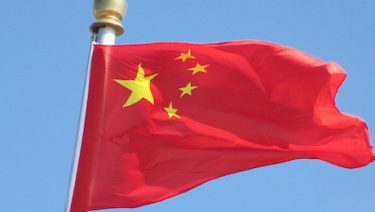By Michael Bastasch
A new study underscores a longstanding concern about sweeping plans to increase renewable energy use in the U.S., like the Green New Deal: dependency on China.
The study, published in the journal Nature Sustainability and highlighted in a Friday E&E News report, found that plans to ramp up offshore wind energy production will require huge amounts of rare earth minerals produced in China.
“These demands would total over 15.5 [gigagrams] of neodymium by 2050, of which 20 percent could potentially be avoided by circular usage from decommissioned turbines but only if recycling technologies are developed or, better still, magnets are designed for reuse,” the study found.

The study, published in the journal Nature Sustainability and highlighted in a Friday E&E News report, found that plans to ramp up offshore wind energy production will require huge amounts of rare earth minerals produced in China.
Experts say neodymium is a key mineral for large-scale offshore wind turbine development, which need to be more reliable than their onshore counterparts. It’s also used in electric cars and other technologies.
However, the “current supply dominated by a single country, China,” the study noted, which could increase U.S. energy dependency on foreign countries, including China, should a plan, like the Green New Deal, ever be put into action.
The Nature study looked at the implications of the U.S. Energy Department’s vision for 80 gigawatts of offshore wind power by 2050. That would require enough neodymium to power 20 million electric cars.
But plans like the Green New Deal are more ambitious, and aim to achieve “net-zero” greenhouse gas emissions within 10 years. The non-binding resolution was introduced by New York Rep. Alexandria Ocasio-Cortez and Massachusetts Sen. Ed Markey, both Democrats, in February.
The resolution calls for “dramatically expanding and upgrading renewable power sources” to achieve Democratic lawmakers’ climate change goals. That likely means more imports of not just neodymium, but also other critical minerals used to make solar panels and wind turbines.
Critical minerals, like praseodymium, dysprosium, terbium, indium and silver, would also see increased demand to meet the production needs of a Green New Deal.
“Currently, China is the dominant player in critical metal production — and its dominance is growing,” reads an analysis of critical minerals commissioned by the Dutch government.
“In the past few years, the country has structurally increased the economic value of these metals: first China developed extraction infrastructure, and consecutively internalized the refining of the raw materials,” reads the report. “Now, the country is increasing the production of components and products that require critical metals.”
 The Green New Deal also calls for “zero-emission vehicle infrastructure and manufacturing,” which means more electric cars on the road. That’s going to also ramp up U.S. demand for neodymium because it’s used by automakers, like Tesla, to propel its Model 3.
The Green New Deal also calls for “zero-emission vehicle infrastructure and manufacturing,” which means more electric cars on the road. That’s going to also ramp up U.S. demand for neodymium because it’s used by automakers, like Tesla, to propel its Model 3.
But that’s not all. Electric cars require batteries, which need lithium and cobalt. While most of the world’s cobalt is mined in the Democratic Republic of Congo, about 40 percent is refined in China, according to a recent paper.
“China already dominates global battery manufacturing and is on track to supply nearly two-thirds of all production by 2020,” Manhattan Institute senior fellow Mark Mills wrote in a paper published in late March.
“For the U.S., at least, given where the materials are mined and where batteries are made, imports would increase radically. Perspective on each of these realities follows,” Mills wrote.
Content created by The Daily Caller News Foundation is available without charge to any eligible news publisher that can provide a large audience. For licensing opportunities for this original content, email licensing@dailycallernewsfoundation.org.



Wait!
You mean that socialism leads to poverty, disease, starvation, and tyranny?
No! It can’t be because Comrade Bernie, AOC (Airhead On Crack), and the rest of the great thinkers in the Democratic (now Socialist) Party are telling us that socialism is the ticket to prosperity, coupled with mass illegal immigration.
Don’t forget about their Green New Deal. (Yep, green is the new red.)
It’s getting even better.
Not only are their presidential candidates trying to out-socialize one another, they are now tripping over one another trying to kiss Al Sharpton’s ring and promising reparations.
And if dims get the vote, reparations will be a monthly thing forever, even for those unwilling to work.
Bring in the illegals and let’s party
“No! It can’t be because Comrade Bernie, AOC ”
Actually I was surprised to hear Burnee, in a very recent campaign stump say with all the poor flooding in won’t be sustainable..to our give away progams.. I almost fell over in disbelief.
On the point of China, the left would love to be able to implement their socialism like China can do it. They love the “people control” they have down to a science. They would gladly turn over chunks of promised trade cash for credit as needed and benefit Chinese wind and solar..
The Trade deals that Pres Trump have made are fabulous, who else EVER looked out
for the USA in the deals? NO One I can think of. Maybe RR a little but not across the board.
It’s called unintended consequences. Will we ever learn???????
China, a Particularly Egregious Trading Partner
China has a huge trade surplus with the US (exports to US, 461.1 b – imports from US, 116.7 b = surplus $344.4 b in 2017. Surpluses were 347.0 b in 2016 and 367.3 b in 2015).
https://www.census.gov/foreign-trade/balance/c5700.html
WalMart, Best Buy, etc., basically act as sales outlets for East Asian products. US foreign car dealers, which sell over 50% of all new cars in the US, basically act as sales and service outlets for European and East Asian car companies. China has been, and still is, notorious for:
– Raising barriers against foreign companies entering and competing in its markets; against WTO rules.
– Forcing technology transfers from foreign companies to Chinese companies; against WTO rules.
– Forcing foreign companies to have Chinese partners; against WTO rules.
– Committing intellectual property theft regarding trade secrets of foreign companies; against WTO rules.
– Committing intellectual property theft regarding the US defense sector; a US national security issue.
– Trying to buy US companies that make critical components for US weapon systems; a US national security issue.
Negotiating Flawed Trade Agreements
The General Agreement on Tariffs and Trade, GATT, became effective on 1 January 1948, superseded by the World Trade Organization, WTO on 1 January 1986. The average tariff levels for the major GATT participants, about 22% in 1947, were 5% after the Uruguay Round in 1999; averages can be deceiving. Experts attribute part of these tariff changes to GATT and the WTO.
https://en.wikipedia.org/wiki/General_Agreement_on_Tariffs_and_Trade
The US had become a new world power after WW-II. The US, as part of building its “Free Enterprise World Leadership versus Communism” structure to contain Russia and China, negotiated a series of generous trade agreements with impoverished allies in the 1950s that set the patterns for later agreements, which ultimately proved to be disastrous for the US economy and grossly beneficial for the economies of others.
Primary reasons for the Unfavorable Outcomes for the US Economy
1) US generosity after WW-II, which was gratefully accepted by “trading partners” and exploited at every opportunity, such as by not paying their fair share for NATO expenses for decades (5 of 29 NATO nations pay 2% of GDP for their OWN defense), and by the US opening its markets to “help them recover”.
– They kept their market more or less closed in one form or another, pleading weakness, hardship and excessive social-economic disruption, as excuses for not making structural changes, i.e., much lip service to reciprocity, but too little effective action of benefit to the US.
– “Trading partners” restricted US access to their markets by claiming “helping to fight Communism” (the EU), “developing nation” status (China), or “ being a reliable ally for Pacific Rim security” (Japan).
2) Europe and Japan recovering from WW-II damage much quicker, and becoming more formidable competitors than was understood by the US at the time, largely due to having a trained work force, pro-growth policies, and profitable access to the rich US market, with much fewer regulations, and with several hundred million, relatively well-off people, dedicated to the mass consumption of goods.
3) The US “business as usual” approach (which included an isolationist mindset and advertising-hyped consumerism, i.e., too much “borrow and enjoy” and too little “save and invest”).
4) By the time the US began to realize what had happened, about the mid 70s, foreign “trading partners” were eating our lunch, extending their technological reach into the US, and buying many large US companies, etc. They found it easy to do business in the US and to make money, whereas, by means of various protectionist rules and regulations and subsidies for domestic companies (“launch“ subsidies for the SST, Airbus 380, etc., are well-known examples), foreign countries were slowly but surely making things more difficult for US companies.
5) US trade negotiators:
– Likely were lacking the detailed understanding and experience of world trade of foreign negotiators who had acquired that understanding and experience over many centuries.
– Opened US markets, or failed to sufficiently protect them, especially in manufacturing (the valuable front end of the value chain), while foreign negotiators left themselves enough wiggle room to protect their own markets.
– Raised in the more open, free trade US economy likely were not intimately familiar with the nuances of that wiggle room.
The US cannot blame “trading partners” for taking as much advantage as possible to expand their exports to the US, buy US assets and make big money on their exports to the US and on their US-held assets; about $500 billion in 2016.
Trump calling for a halt to “business as usual”, and for a more fair and balanced US trade, likely is very upsetting for trading partners. They objected to Trump being elected President. They are not interested in bi-lateral trade agreements that would provide a glide path to lower US trade deficits, either by limiting their manufactured exports or increasing their manufactured imports, or both. After all, they already dug their way to the vault and do not want the vault moved. They continue to object to spend more money on their OWN defense.
Ha, ha, ha. Dependent on China? After they over run us because of our stupidity, I guess we WILL be dependent on China…..for food, life, you name it. They will be our masters. The Democrats are beyond foolish, beyond stupid. These people are dangerous.